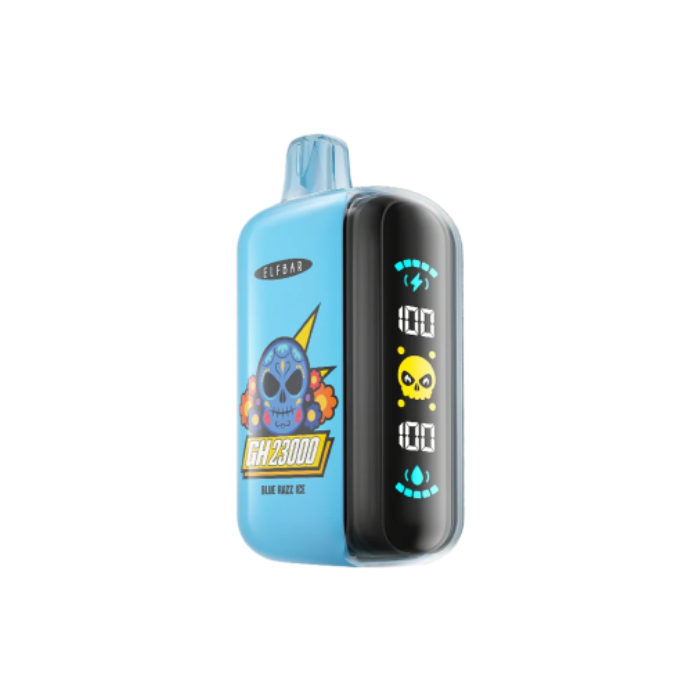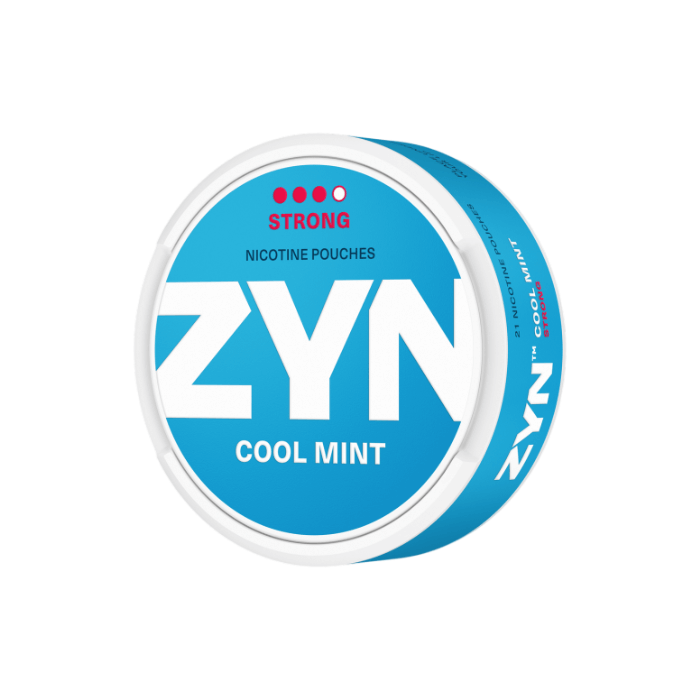Whether you like it or not, cigarette smoking has been one of the key things that have helped many individuals to get through their lives. Tobacco cigarettes, after all, possess the stimulant nicotine, which somehow calms one’s mind and senses whenever they feel stressed, anxious, or other similar feelings.
Tobacco, unfortunately, has been linked to a plethora of health risks. While a huge percentage of the smoking population sticks to cigarettes, others have become worried about their health. They then pushed themselves to start their smoking cessation journey and find a viable replacement for their nicotine needs and cravings.
Enter vapes. Also known as e-cigarettes, these relatively new devices have taken the world by storm as they are typically advertised by brands to be a great alternative to tobacco smoking. But when did vapes truly become popular? How did e-cigarette use change the landscape of the tobacco industry? Read more to find out about the popularity of vapes.
History of E-Cigarettes
To better understand the popularity of electronic cigarettes, we must first know how and why these devices were created.
The origins of e-cigarettes can be traced back almost a century. You see, in 1927, New Yorker Joseph Robinson filed a patent for a device known as a mechanical butane ignition vaporizer. It is basically a medical tool that allows people to inhale medicinal compounds. Even though it’s considered the first electric vaporizer, it never materialized beyond the drawing board, probably due to the lack of materials and the right manufacturing processes back then.
It was in 1963 when attempts to make an e-cigarette came to fruition. American inventor Herbert A. Gilbert introduced a smokeless, non-tobacco cigarette. It was somehow similar to its modern counterparts, utilizing a battery to heat flavoured vapour.
However, it failed to gain widespread acceptance. Back then, the dangers of smoking tobacco were not yet that clear. Hence, people back then didn’t want an alternative to their beloved smoking products.
He also attributed the failure of the device to the companies that might have commercialized it. He believed that the companies chose to wait for the patent to expire instead of licensing it. However, it’s not clear whether his invention had truly commercial potential at the time.
Despite the lack of progress towards e-cigarettes, some people just don’t know when to quit. In the late 1970s, Phil Ray, one of the pioneers of computers, and his personal physician Norman Jacobson made yet another groundbreaking contribution to the realm of e-cigarettes. They introduced a filter soaked in nicotine, which one could inhale with every puff. The pair are credited with making the term ‘vape’ popular, which is the action that’s done when using e-cigs.
While the significant strides in the e-cig technology didn’t catch on early among tobacco users, the number of health data that showcases the dangers of tobacco continued to increase. By the 1990s and early 2000s, health authorities have pretty much confirmed that smoking tobacco like cigarettes can truly contribute to a wide variety of illnesses, including lung cancer, heart disease, and many more.
At the same time, numerous patents for nicotine inhaler devices were filed by many tobacco companies and individual inventors. Most of these devices rely on evaporation or physical propulsion, while others already resemble the working mechanisms of modern e-cigarettes. Notably, a chemical-reaction-based system was invented in the 1990s and remains in the pipeline.
Reynolds introduced the Eclipse “heat-not-burn” device, which worked somewhere between a pure nicotine inhaler and a combusted cigarette. A major US tobacco company then sought FDA permission to market a version of an e-cigarette around 1998. However, the FDA denied the request, citing it as an unapproved drug delivery service. This decision may be due to the apparent disappearance of attempts to bring an e-cigarette to market.
Given the growing dangers of tobacco as well as the lack of alternatives, individuals who are smoking cigarettes are trying to find a way out, or at least a substitute for their good old traditional cigarettes. One of these individuals is Hon Lik, a Chinese pharmacist.
In 2001, Hon Lik was driven by his desire to overcome his own smoking addiction after his father died from lung cancer, which is one of the illnesses one can get from smoking. His strong desire helped him make a significant breakthrough in e-cigarette technology.
Two years later, the pharmacist would release the first electronic cigarette that we already know today. It was well-received by the public, making it the first commercially successful device that one can use to get their much-needed nicotine hits. His company, Golden Dragon Holdings, would later rename the device as Ruyan, which means “like smoke.”
The device, at this point, would comprise the basic components that most e-cigarette products possess today. These components include the battery component, an atomizer, and a cartridge.
When the device is turned on, the battery heats the e-liquid in the cartridge. The atomizer then vaporizes the liquid, producing it as a mist or aerosol that the user inhales.
Even though modern vapes have advanced significantly since the initial concept by Hon Lik, the fundamental principle of mimicking or imitating the act of smoking through vaporizing nicotine liquid or vape juice remains unchanged today.
Rise of E-Cigarettes
The rise of e-cigarettes would eventually begin by the time Hon Lik and his company released the very first commercially available and successful vaping device. Other tobacco companies all over the world were then expected to craft their own thing, ensuring they could capture the market of adult smokers trying to ditch their cigarettes in favour of the rising smoking cessation tool.
If you are quitting smoking but still want nicotine in your body, you’ll probably be better off with a vaping device. This would be the mantra of many tobacco users who are somehow afraid of the risks associated with tobacco. Companies would then use this fear to capture their hearts.
By April 2006, Europe would allow electronic cigarettes to enter the market. Four months later, electronic cigarettes would then be introduced and enter the US market. Other countries all over the world would follow this trend, giving adult nicotine users access to vaping devices as an alternative to tobacco products and as a way to consume nicotine.
The rise of e-cigarettes around the world can be attributed to numerous factors, which include growing awareness of the health risks associated with tobacco smoking, advancements in vaping technology, a wide variety of appealing flavours, and the accessibility of such products.
Unlike traditional cigarettes, which contain tar and other harmful byproducts of combustion, e-cigarettes eliminate many of these toxic compounds.
However, the rise of e-cigarette use, especially among young adults, prompted health organizations and governments to question the overall safety of electronic cigarettes, citing that the devices, even without the presence of tobacco, might still impact the health of users due to the chemicals being inhaled through the aerosol. They are also worried about the sudden increase of young people using vapes.
As mentioned earlier, vaping devices work by heating the vape juice and letting its byproduct aerosol or vapour be inhaled by the user. Some studies would then find that some chemicals in vape juices or e-liquids may harm one’s health, especially once they are heated. These chemicals include propylene glycol, acrolein, cadmium, benzene, heavy metals, diacetyl, and many more.
When these chemicals continue to enter one’s body, they are suspected to cause plenty of health risks, which include irreversible lung damage, breathing problems, and brain development issues.
Then there’s nicotine addiction. Vaping devices, as we all know, are meant to be a substitute for traditional cigarettes. Even though they don’t possess tobacco, their e-liquids are still filled with nicotine, a stimulant that can help you feel happy and relaxed for a short time.
Continuous consumption of nicotine, however, leads to nicotine addiction. It can also cause numerous side effects, which include increased blood pressure, sleep disturbances, headaches, dizziness, changes in heart rate and rhythm, shortness of breath, and many more.
Due to these safety concerns, governments would somehow regulate the sale, promotion, and use of e-cigarettes. They now also treat them like traditional cigarettes and other tobacco products, permitting vaping products to be only used by those who are of legal age. And contrary to the claims of brands, governments don’t consider these devices as a tobacco harm reduction and a smoking cessation tool.
Electronic Nicotine Delivery Systems (ENDS)
The popularity of vapes or electronic cigarettes is best understood through its origin. Additionally, the devices have encountered several evolutions throughout their life cycle, allowing them to somehow improve their performance as well as make them as long-lasting as possible.
Before they are called vapes, electronic cigarettes, and other terms, they are first identified as electronic Nicotine Delivery Systems or ENDS.
ENDS represent a rapidly changing class of tobacco, or in this case, nicotine products known by a lot of names, including e-cigarettes, e-cigs, mods, vapes, and tank systems. These systems, as their name implies, work by delivering a nicotine-filled aerosol to the user. This aerosol may also contain propylene glycol, vegetable glycerin, and flavouring chemicals.
One thing that you should know about ENDS is they don’t require any combustion. They also don’t have to be lit up with a lighter or any fire source for them to work. Instead, the devices are powered with a battery that can be either recharged or not. They also contain e-liquid or vape juice, which is also either refillable or not. These distinctions make them different from tobacco cigarettes since they require combustion and rely heavily on tobacco and additives for their overall flavour and nicotine potency.
By the time ENDS products first entered the US market, they were well-received by tobacco users seeking a less harmful alternative to cigarettes. In 2018, US adults aged 18 and above were reported to use ENDS daily or every other day. Since 2014, ENDS products have become the most popular nicotine product among young people in the country. Six years later, approximately 3.6 million US youth were reported to have used ENDS in the past 30 days.
In Canada, ENDS are also used by many Canadians in a wide range of age groups. In 2022, the Canadian Tobacco and Nicotine Survey revealed the following findings:
- 6% of Canadians aged 15 and older reported using ENDS in the past 30 days. Additionally, younger Canadians (14% of those aged 15-19 and 20% of those aged 20-24) were more likely to use ENDS compared to 4% of Canadians aged 25 and older.
- Using ENDS and vaping to reduce stress was the key reason cited by 15-19-year-olds (31%) and 20-24-year-olds (33%), followed by 44% of those aged 25 and older who reported using ENDS to reduce, quit, or avoid returning to smoking.
- 7% of males and 5% of females vaped and used ENDS in the past 30 days.
Another survey conducted in Canada is the Canadian Student Tobacco, Alcohol and Drugs Survey. It asks about the use of vaping products, tobacco, alcohol, cannabis, and drugs among Canadian students between grades 7 and 12 (secondary I to secondary V in Quebec). The 2021-22 survey showed that:
- 17% of students in grades 7-12 reported using a vaping product (referred to as an e-cigarette in the survey) within the last 30 days.
- 16% of students have used an e-cigarette with nicotine, and 4% have used an e-cigarette without nicotine in the past 30 days.
- 55% of students thought it would be “fairly easy” or “very easy” to get an e-cigarette with nicotine if they wanted one, and 54% thought it would be “fairly easy” or “very easy” to get an e-cigarette without nicotine if they wanted one.
- Among students who used cannabis, 54% reported vaping liquid cannabis and 34% reported vaping dried cannabis in the past 12 months.
Youth ENDS use raises concerns about nicotine addiction, the negative effects of nicotine on adolescent brain development, and other potential health harms, including increased risk of initiating cigarette smoking. And based on the findings mentioned above, it would be somehow difficult to control their use of ENDS if e-cigarette sales remain unrestricted.
Now, despite the growing amount of research and surveys regarding ENDS use, understanding their true health risks and potential benefits remains to be difficult. The key reason behind this is that vaping products are still new to the market. The only thing authorities can do right now is to regulate their sale, promotion, and use as well as prohibit the wrong people from accessing them.
Even with restrictions, huge groups of adult smokers would somehow continue relying on ENDS to help them quit smoking or reduce their cigarette consumption, which conveniently aligns with the government’s objectives. However, health authorities are also keen on reminding people that vaping devices have yet to be substantiated as an effective tool in promoting smoking cessation.
Evolution of Disposable Vapes
If you want to stop cigarette smoking but want to still consume nicotine, the very first thing that you may have in mind is to opt for vaping devices.
Unfortunately, when these devices first reach the market, many of them tend to be expensive. But as more brands came up with their own take on ENDS, their prices started to go lower. Additionally, they have developed disposable e-cigarettes, which are significantly cheaper than refillable and customizable ones.
Perhaps, one potential reason why e-cigarette users increased over the past few years is the existence of disposable electronic cigarettes.
Before, vaping devices could only be used once, which somehow mimicked the look and feel of combustible tobacco products like cigarettes. Some iterations of the devices would be created. However, they only offered limited puffs and minimal customization due to their small e-liquid reservoirs, basic heating elements, and low battery life.
Most of these early versions of vaping devices were made by NJOY and Blu.
The technology behind vaping devices, fortunately, has advanced significantly over the last decade. This is where modern disposable vapes come in. They have become more efficient, boasting larger e-liquid capacities, improved batteries that are even rechargeable, and higher nicotine concentrations. They even have newly improved heating elements to effectively enhance puff quality.
One technology that can be attributed to the improvements in disposable vapes is nicotine salt. Pioneered by JUUL in 2015, it has somehow revolutionized vaping since it allows higher nicotine concentrations with a smoother experience. The integration of nicotine salts allows vapes to mimic the natural nicotine delivery of cigarettes.
From 2015 to 2018, disposable vapes received a major overhaul of their design and battery capacity. They started to have a compact design and a larger battery capacity. Even their flavours are then expanded to cater to the diverse preferences of vape users.
Today, disposable vapes often include larger e-liquid capacities, higher nicotine content, and a new heating element technology. Their included batteries can then be recharged, allowing users to continue vaping their devices until they run out of juice. Disposable vapes also maximize mesh coils for enhanced vapour production as well as airflow control for a more personalized vaping experience.
All these changes in disposable vapes made them a strong alternative to both traditional cigarettes and refillable vape systems. Plus, they tend to be more affordable without sacrificing quality.
If you want to buy disposable vapes here in Canada, simply visit our online store at Native Smokes 4 Less. NS4L is an online store that offers a wide variety of disposable vapes from reputable brands like Elfbar, Geek Bar, Lost Mary, OVNS, OXBar, and VuseGO.
Rise in Popularity
The popularity of vaping devices, regardless of their types and brands, is undeniable. When you visit some convenience stores, gas stations, and even specialty tobacco shops, you will often find a lot of electronic cigarettes being sold behind the counter. However, due to government restrictions, some places may not be allowed to sell them anymore.
E-cigarette use among adults and even young people has risen significantly over the past few years, which then contributed to the rise in popularity of ENDS. Despite the harmful substances linked to their vapour or aerosol, a lot of them still cling to these devices just to get their nicotine fix.
There are a lot of reasons that may have contributed to the rampant use of e-cigarettes, making them as popular as ever. Some of these reasons are as follows:
- Smoking cessation and tobacco control: Today, many people are already aware of the health risks associated with smoking cigarettes. Therefore, instead of using tobacco products, they switch to vaping devices as their primary way of getting and enjoying nicotine. For them, vaping can protect them from being exposed to tar, carbon monoxide, and other carcinogens and harmful substances released by tobacco smoke.
- Satisfying flavours and nicotine strengths: Compared to cigarettes, vaping products don’t have the rich, earthy flavour profile of tobacco. Instead, they rely on e-liquids that are typically filled with delectable flavours like fruits, mint, and even drinks. They also have varying nicotine strengths, giving users a more customizable nicotine experience.
- Convenience and accessibility: Before restrictions were enforced by the authorities, vaping devices were technically sold anywhere. You can find them at your nearest convenience store, gas station, or specialty tobacco shop. You can even buy them online. The convenience and accessibility of vapes have led to the increase of adult e-cigarette users.
- Social influence, marketing, and trends: E-cigarette companies have employed various strategies to market their products as a means of quitting smoking. They have also positioned e-cigarettes as a social tool, associating vaping with coolness and trendiness. This has resulted in the rise of young e-cigarette users, which governments are now attempting to address.
All these reasons have somehow pushed e-cigarettes to become so popular as ever, that even with regulations and restrictions set by authorities, many people still rely on these products as a way to satisfy their nicotine cravings, quit smoking conventional cigarettes, and become cool.
Frequently Asked Questions
When did vapes come to Canada?
Vapes were introduced to the Canadian market in the mid-2000s, shortly after e-cigarettes became available globally. Initially, vapes were unregulated in the country. By 2018, Canada introduced the Tobacco and Vaping Products Act or TVPA, regulating their sale and use.
When did modern vaping start?
Modern vaping started in the early 2000s with Hon Lik’s invention of the first commercial e-cigarette. His design took advantage of a battery-powered heating element to vaporize a nicotine solution, giving users a tobacco smoke-free alternative to cigarettes.
Why are disposable vapes so popular now?
Disposable vapes are so popular now because they are convenient, easy to use, and require no maintenance or refilling. They come in a variety of flavours and nicotine strengths, which makes them appealing to both new and experienced users. They also feature a compact design, making them an attractive choice for people looking for a hassle-free vaping experience.
When did vapes become so popular?
Vapes became widely popular in the early 2010s as technology improved. Many brands have also entered the vaping market, making e-cigarettes more popular than ever. The introduction of pod-based systems in 2015, as well as improvements in disposable vapes, further fueled their popularity, especially among younger users and past cigarette smokers.
Summary
Vapes became popular when e-cigarette companies started innovating these products. They have slowly yet surely upgraded the components found in these devices, allowing them to produce better flavour and vapour cloud and last for a longer time. They likewise changed the formulation of e-liquids to ensure they provide stronger hits without being too harsh on the throat.
Vaping companies would then go on and market these devices as a great tool to reduce or quit smoking since they don’t rely on tobacco and won’t produce any byproducts of tobacco smoke. Their prices have likewise decreased for the past few years, enticing users to ditch their smokes in favour of these devices. Young people were also hooked on these devices as using them can make them cool.
Even though vapes remain popular today, nicotine users like you must still be cautious when using them since they contain nicotine, a highly addictive chemical that can ruin your body in the long term. Vaping may also present unknown health risks, which future studies may eventually uncover.






















